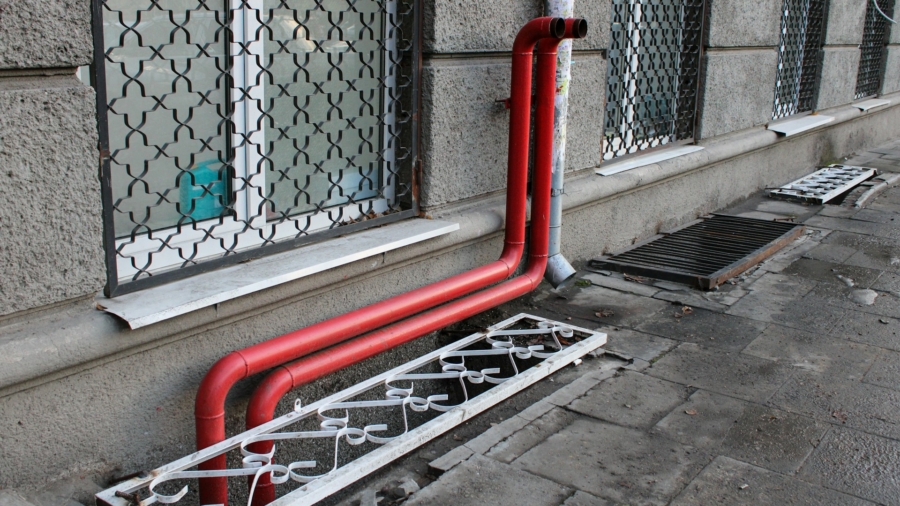Modern infrastructure challenges require innovative solutions that balance functionality with environmental responsibility. Traditional water line repair methods, while effective, often create significant ecological disruptions that communities increasingly reject.
Trenchless technology represents a fundamental shift in how we approach underground utility maintenance, offering a pathway that preserves landscapes while delivering superior results.
This comprehensive guide examines how trenchless water line solutions minimize environmental impact through reduced excavation practices, generate less waste than conventional methods, and contribute to broader sustainability goals.
Whether you’re a municipal planner, property manager, or environmentally conscious homeowner, these insights will help you make informed decisions about your next infrastructure project.
Learn more about how these methods can transform your approach to water line maintenance while protecting our environment.
Protecting Landscapes Through Minimal Disruption
Preserving Surface Ecosystems
Traditional excavation methods require extensive digging that destroys decades of ecological development. Minimal excavation techniques protect established root systems, soil microorganisms, and surface vegetation that form complex interdependent relationships.
Trees that might otherwise face removal continue providing oxygen production, carbon sequestration, and habitat for local wildlife. Mature landscaping represents a significant investment in both time and resources.
A single established tree provides environmental benefits worth thousands of dollars annually through air purification, temperature regulation, and stormwater management. Trenchless solutions preserve these natural assets while addressing infrastructure needs.
Maintaining Soil Integrity
Conventional digging methods disrupt soil composition and structure in ways that require years to recover. Key benefits of minimal excavation include:
- Preserved soil layers maintain natural drainage patterns
- Reduced compaction from heavy machinery prevents long-term fertility issues
- Intact microbial communities continue supporting plant health
- Minimal erosion risk during and after repair completion
Healthy soil serves as a foundation for sustainable landscapes and plays a crucial role in local water cycles and carbon storage.
Protecting Water Quality
Surface disruption from traditional excavation increases sediment runoff that contaminates nearby water sources. Trenchless methods virtually eliminate this risk by maintaining ground cover and natural filtration systems. This protection extends to:
- Groundwater resources that supply drinking water
- Surface streams and rivers supporting aquatic ecosystems
- Wetlands that provide natural flood control and habitat
- Storm drain systems that manage urban runoff
Minimizing Construction Waste Generation
Reduced Material Disposal
Traditional water line replacement generates substantial waste streams that burden landfill systems and require energy-intensive disposal processes. Trenchless solutions produce significantly less material waste through several mechanisms:
Eliminated excavated soil disposal: Conventional methods generate 20-30 cubic yards of displaced earth per 100 feet of pipe replacement. This material requires transportation, processing, and often permanent landfill disposal.
Reduced packaging waste: Traditional projects require extensive protective materials, temporary barriers, and safety equipment that become waste after a single use. Trenchless operations use fewer consumable materials overall.
Minimized damaged infrastructure: Surface excavation often damages sidewalks, driveways, landscaping, and other improvements requiring replacement. These secondary waste streams can exceed the volume of original repair materials.
Extended Infrastructure Lifespan
Trenchless installation methods often result in longer-lasting repairs that reduce future replacement cycles. Modern trenchless materials and techniques provide service lives of 50-100 years compared to 30-50 years for traditionally installed systems. This longevity translates to:
- Fewer future construction projects and associated waste generation
- Reduced manufacturing demand for replacement materials
- Lower cumulative environmental impact over the infrastructure’s lifetime
- Decreased frequency of service disruptions
Efficient Resource Utilization
Trenchless projects maximize material efficiency through precise installation methods. Unlike traditional excavation, which requires over-ordering materials to account for field conditions, trenchless operations use exact quantities based on detailed pre-installation surveys. This precision reduces:
- Excess pipe and fitting disposal
- Unused concrete and backfill materials
- Surplus safety and construction consumables
- Transportation fuel for unnecessary material delivery
Supporting Long-Term Sustainability Goals
Carbon Footprint Reduction
Trenchless water line solutions contribute to environmental sustainability through substantial carbon footprint reductions across multiple project phases:
Transportation efficiency: Traditional projects require numerous truck trips to remove excavated material and deliver backfill. A typical residential water line replacement might require 15-20 truck trips, while trenchless methods often complete similar work with 2-3 vehicle visits.
Equipment operation: Heavy excavation machinery consumes significant diesel fuel during earth-moving operations. Trenchless equipment operates more efficiently and for shorter durations, reducing overall fuel consumption by 60-80% compared to conventional methods.
Material production impact: Manufacturing new pipe materials requires less energy than producing, transporting, and processing replacement materials for damaged surface improvements like concrete, asphalt, and landscaping.
Energy Conservation
Beyond direct construction activities, trenchless solutions support broader energy conservation through:
- Preserved mature vegetation that reduces building cooling loads and urban heat island effects
- Maintained natural insulation from undisturbed soil layers that improve building energy efficiency
- Protected root systems that continue providing natural temperature moderation
These benefits compound over time, creating lasting energy savings that extend far beyond initial project completion.
Water Resource Protection
Sustainable water infrastructure management requires protecting both the delivery system and surrounding water resources. Trenchless methods excel through:
Contamination prevention: Sealed installation processes prevent soil and debris from entering water supply lines during construction. Traditional open excavation creates contamination risks that require extensive flushing and testing procedures.
Reduced system downtime: Faster installation methods minimize service interruptions that can lead to pressure fluctuations and potential backflow events. Maintaining consistent system pressure protects water quality throughout the distribution network.
Enhanced pipe integrity: Modern trenchless installation techniques often create stronger, more durable connections that resist future failures and potential contamination pathways.
Cost-Effective Environmental Solutions
Reduced Restoration Expenses
Traditional excavation projects often require extensive site restoration that adds both cost and environmental impact. Common restoration needs include:
- Landscape replacement and establishment
- Hardscape reconstruction (driveways, walkways, patios)
- Irrigation system repair and reconnection
- Soil amendment and grading corrections
Trenchless methods eliminate most restoration requirements, redirecting these resources toward other sustainability initiatives or cost savings that make environmental upgrades more accessible.
Lower Long-Term Maintenance Impact
Superior installation quality typically results in fewer future maintenance requirements and associated environmental disruptions. This translates to:
- Reduced emergency repair situations that require rapid, less environmentally conscious solutions
- Fewer service calls and associated vehicle emissions
- Lower probability of system failures that could impact the surrounding environmental systems
- Extended intervals between major infrastructure replacement cycles
Improved Project Economics
Cost savings from trenchless installation often make it feasible to invest in higher-quality, more sustainable materials and methods. These economic advantages support environmental goals by:
- Enabling selection of longer-lasting pipe materials
- Allowing investment in advanced leak detection and monitoring systems
- Supporting comprehensive system upgrades rather than piecemeal repairs
- Freeing resources for additional sustainability improvements
Community and Ecosystem Benefits
Reduced Construction Impact on Daily Life
Environmental sustainability extends beyond resource conservation to include quality of life factors that affect community well-being:
Noise reduction: Trenchless operations generate significantly less noise pollution than traditional excavation, protecting both human health and wildlife habitats. Heavy machinery operation periods are shortened, and disruptive activities like concrete breaking are often eliminated.
Air quality preservation: Minimal dust generation and reduced vehicle emissions contribute to better local air quality during construction periods. This particularly benefits sensitive populations, including children, elderly residents, and individuals with respiratory conditions.
Traffic pattern maintenance: Avoiding lane closures and street excavation reduces vehicle emissions from traffic congestion and detour routes. This secondary environmental benefit often exceeds direct construction-related emissions savings.
Supporting Biodiversity
Intact landscapes support diverse wildlife populations that contribute to ecosystem health and resilience:
- Preserved nesting sites for birds and small mammals
- Continuous wildlife corridors that enable species movement and genetic diversity
- Maintained food sources through preserved vegetation and soil ecosystems
- Reduced habitat fragmentation that can isolate wildlife populations
Enhanced Property Values and Community Resilience
Environmental stewardship through trenchless infrastructure solutions supports broader community sustainability goals:
Property value protection: Maintained landscaping and minimal construction disruption preserve neighborhood aesthetics and property values that fund future sustainability investments through higher tax revenues.
Community resilience: Faster project completion and reduced service disruptions enhance community resilience against infrastructure failures and environmental challenges.
Demonstration of environmental leadership: Communities that adopt sustainable infrastructure practices often become models for regional sustainability initiatives and attract environmentally conscious residents and businesses.
Making the Smart Environmental Choice
The environmental advantages of trenchless water line solutions extend far beyond simple excavation reduction.
These methods represent a comprehensive approach to sustainable infrastructure management that protects ecosystems, conserves resources, and supports long-term community well-being.
Modern communities face increasing pressure to balance infrastructure needs with environmental stewardship. Trenchless technology provides a clear pathway forward, delivering superior technical results while minimizing ecological impact.
As climate change and resource scarcity create new challenges, the adoption of these sustainable practices becomes not just beneficial but essential for responsible infrastructure management.
Contact qualified trenchless contractors in your area to explore how these environmentally responsible solutions can address your specific water line needs while supporting broader sustainability goals.

